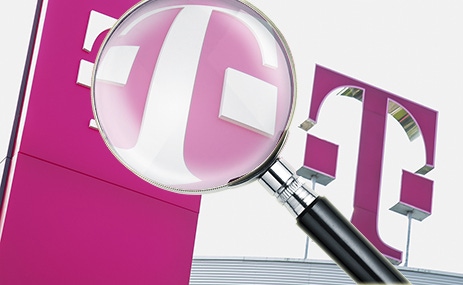Deutsche Telekom has been patting itself on the back again as it switches on vectoring upgrades for 309,000 households, but its fibre ambitions are still looking lowly in comparison to other telcos.
February 12, 2018

Deutsche Telekom has been patting itself on the back again as it switches on vectoring upgrades for 309,000 households, but its fibre ambitions are still looking lowly in comparison to other telcos.
Following the upgrades, an additional 309,000 households can now experience up to 100 Mbps download and 40 Mbps upload speeds which has been put down to the work it has being doing in the vectoring space. While these numbers are encouraging, especially considering the countryside digital divide in Germany is quite notable, the speeds are not exactly glamourous when you compare to the potential fibre offers.
“Some of our upgrade projects serve tens of thousands of households, while others serve just a handful,” said Tim Höttges, CEO of Deutsche Telekom. “For us, every line counts. In Dießen, Haßloch, and Regenstauf, but also in Röhrmoos, Taucha and Willebadessen. No other company is investing as much in broadband expansion in rural areas as Deutsche Telekom.”
DT might be the most active at the moment, but don’t get too carried away; this is nothing more than a temporary measure to satisfy the masses right now. This should not be viewed as a long-term solution to develop infrastructure capable of supporting the sky-high ambitions of the digital economy; only fibre will do.
This is of course a moan Iain Morris from our sister site Light Reading has quite regularly. Germany is lagging behind quite a few other countries when it comes to fibre rollout. Of course, we can hardly criticise in the UK when you consider BT’s activities, but it is worth putting it into perspective when you consider the work Orange has been doing in France and Germany for instance.
Some might also point out that this is a sensible way of managing the expensive business of building a fibre network. Put the ground work in with fibre-to-the-cabinet work, offer a temporary solution such as vectoring to provisionally satisfy the bandwidth-hungry consumers, before moving onto the last-mile fibre projects in the future. It spreads the cost over several quarters while also meeting demand. This could be very German if you believe the efficiency stereotype.
The number of cities now receiving vectoring-based accesses is of course quite staggering. It does look very impressive but it should not serve as a distraction that this is not fibre and vectoring, even the super-vectoring which has been promised in 2018, will never match the performance of fibre.
About the Author(s)
You May Also Like








.png?width=300&auto=webp&quality=80&disable=upscale)


_1.jpg?width=300&auto=webp&quality=80&disable=upscale)


.png?width=800&auto=webp&quality=80&disable=upscale)